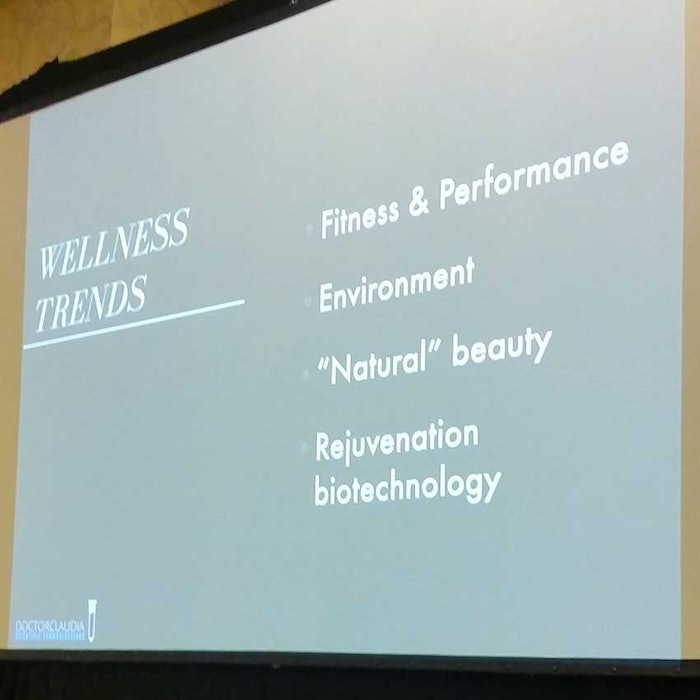
Closing our eyes, we members of the SCC Annual Meeting audience were led through a thought experiment by speaker Claudia Aguirre, Ph.D., of doctorclaudia.com. She has given similar presentations from the TED stage.
"Imagine what it might be like if you couldn't see. You can, by closing your eyes. Now, plug your ears or nose and imagine not having those senses. You still can, right? But can you not feel yourself sitting in your seat?"
Touchy-feely Connections
From there, she led into the discussion of touch, which is a fundamental sense that develops in utero. It is a unique connection the skin can make to the brain—and something science cannot fully replicate. Her presentation focused on this brain-skin connection to formulate products for the "wellness" market.
"There is a specific set of slow reacting nerve fibers (C tactile nerve fibers) that connects from skin—actually, hairy skin—to a specific part of the brain. There, the brain tells you how you feel about a stimulus."
She added that neurocosmetics implementing, for example, endorphins, may provide a unique sensation; or may activate the the TrpV1 receptor but "you can't create a cream that activates these C tactile fibers like giving a hug. That would be ideal," she said, noting we live in a "touch-deprived society." Further, she shared that oxytocin may provide the feel-good factor, but wonders if too much may be bad for us.
Marketing The Science
Shifting gears, Aguirre cautioned attendees to educate marketing and convert their language about wellness so it does not "fall off a cliff."
"Everything 'beauty' is now wellness," she said, pausing to consider a marketed "meditation spray."
While the benefits of touch have been known—for example, by traditional stimulation of the Vagus nerve, she tries to balance Eastern philosophy with Western neuroscience. "It's partly up to us to educate marketing; otherwise, in a way, we're letting [unfounded claims] happen."
Q&A Bits
During the Q&A session, attendees conjectured about her oxytocin comment. This led one audience participant's thought that topical pain relief via numbing and soothing mechanisms may be bad. "Inflammation may be the body's way of communicating a problem," he said.
Aguirre agreed, but added that "it can be useful in cases of long-term pain. Pain is in the brain, and cognition and biofeedback are crucial to understanding long-term patient pain."
Finally, one audience member commented on the skin's ability to non-visually sense color. In response, Aguirre shared thoughts on the skin's capacity as a sensor. "There are components in skin that calculate photons and understand them in a very rudimentary way. [And along these lines], think there is untapped potential in the neuroplasticity of skin," she concluded.










